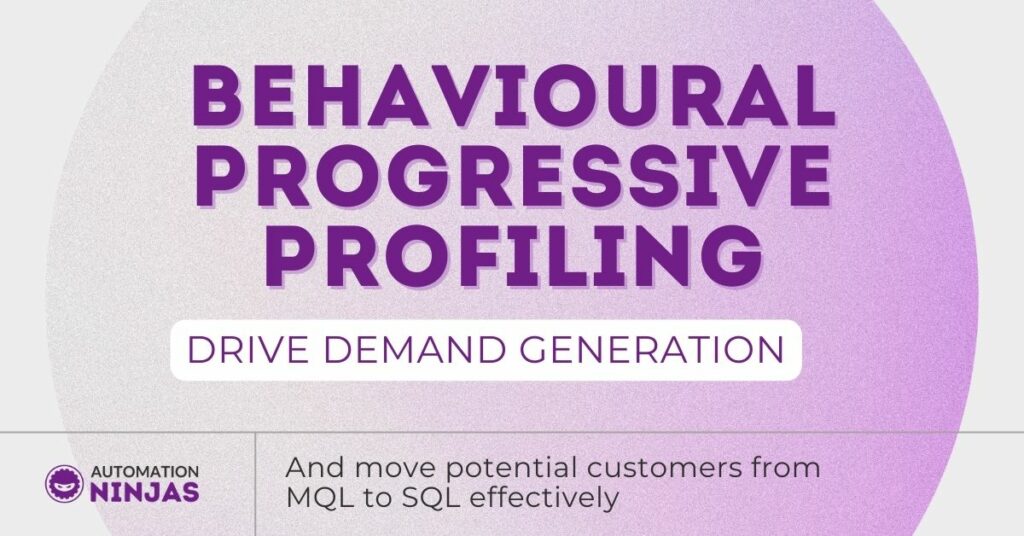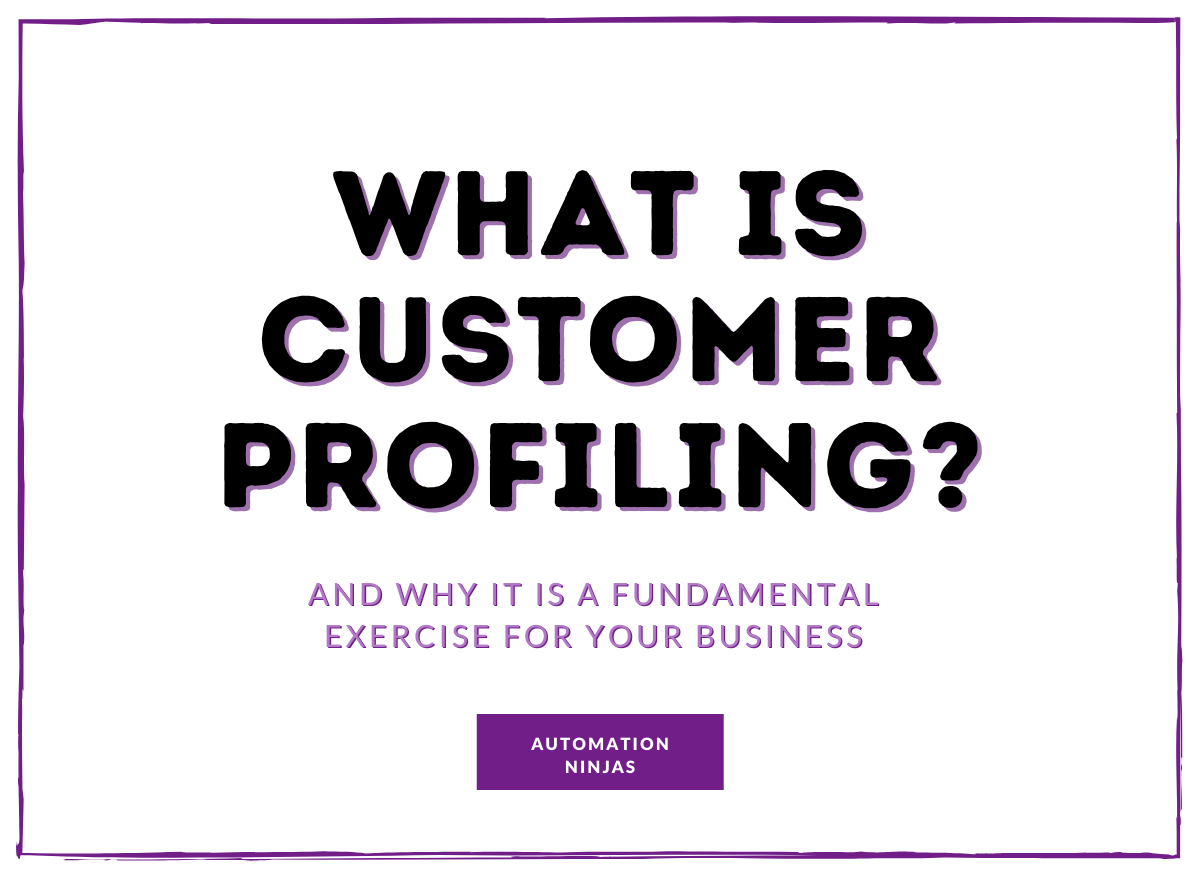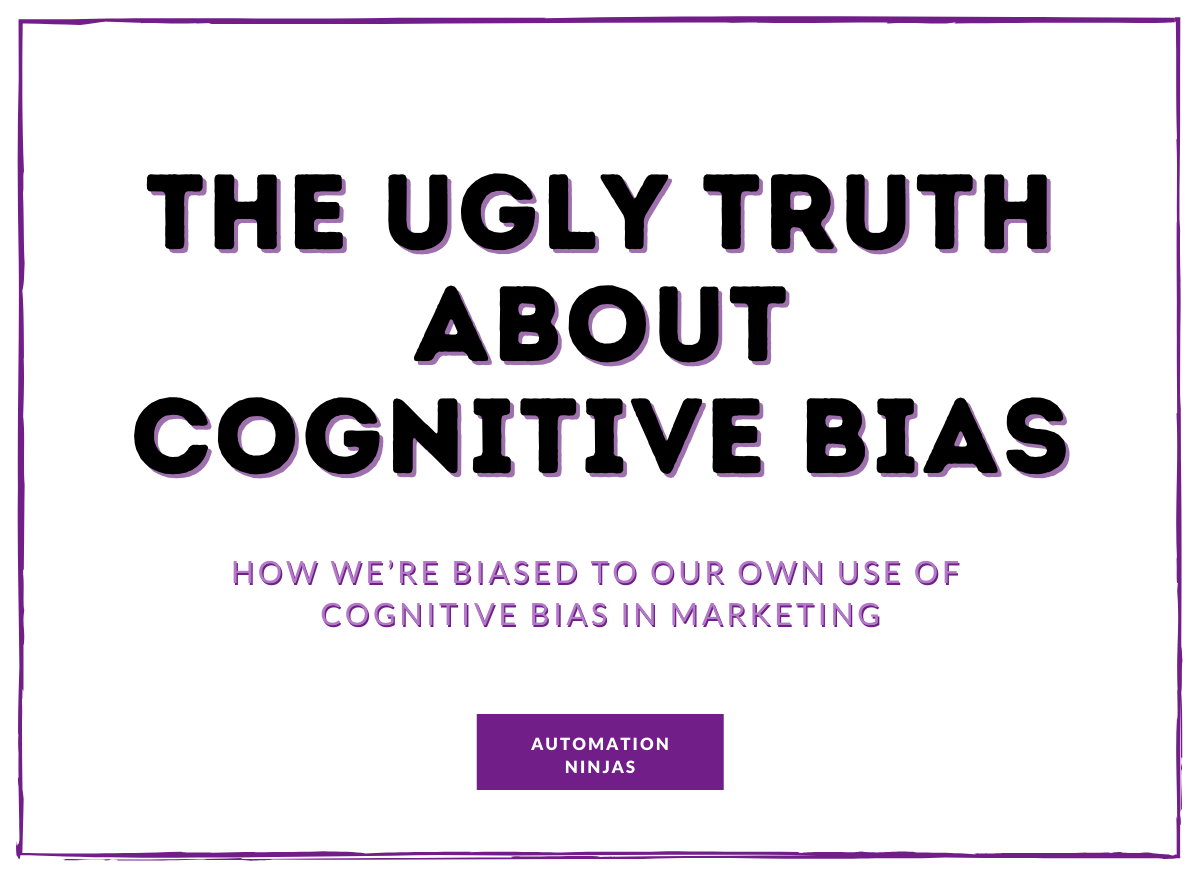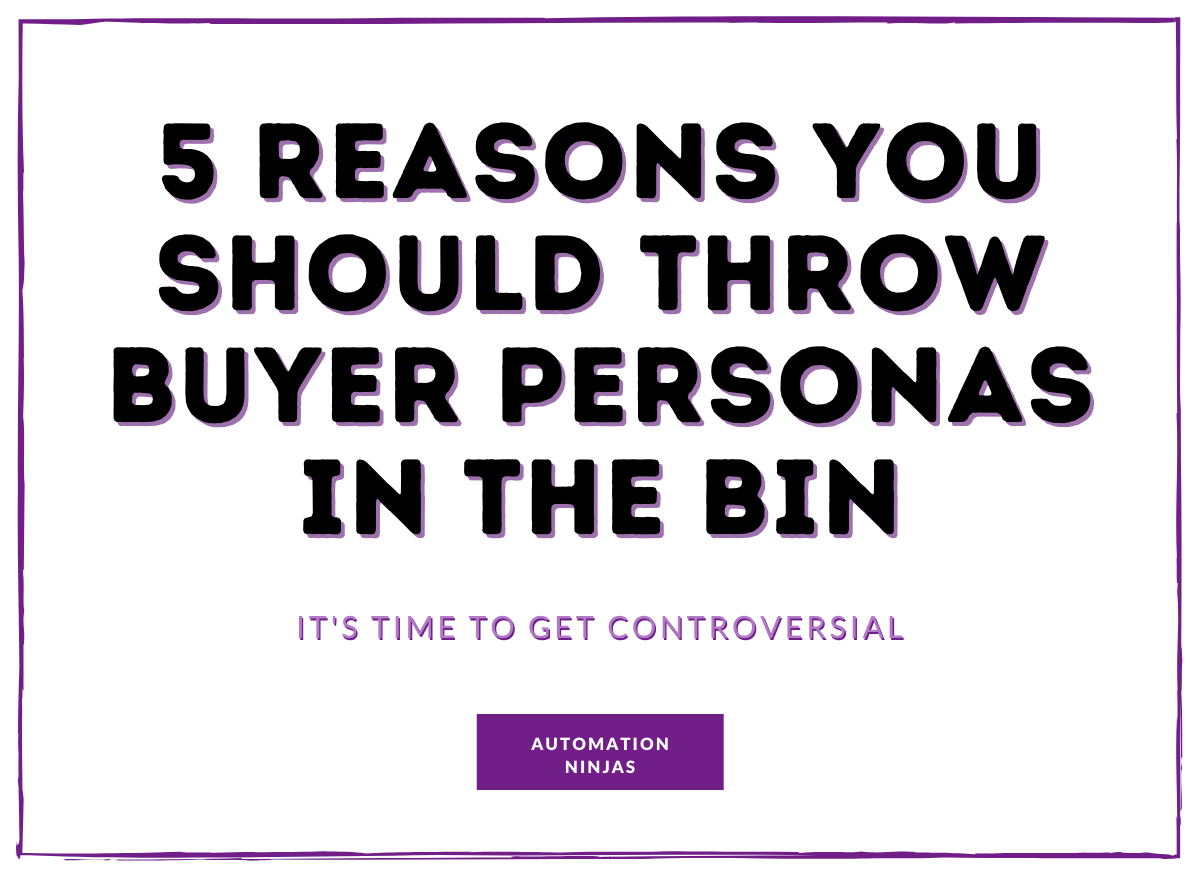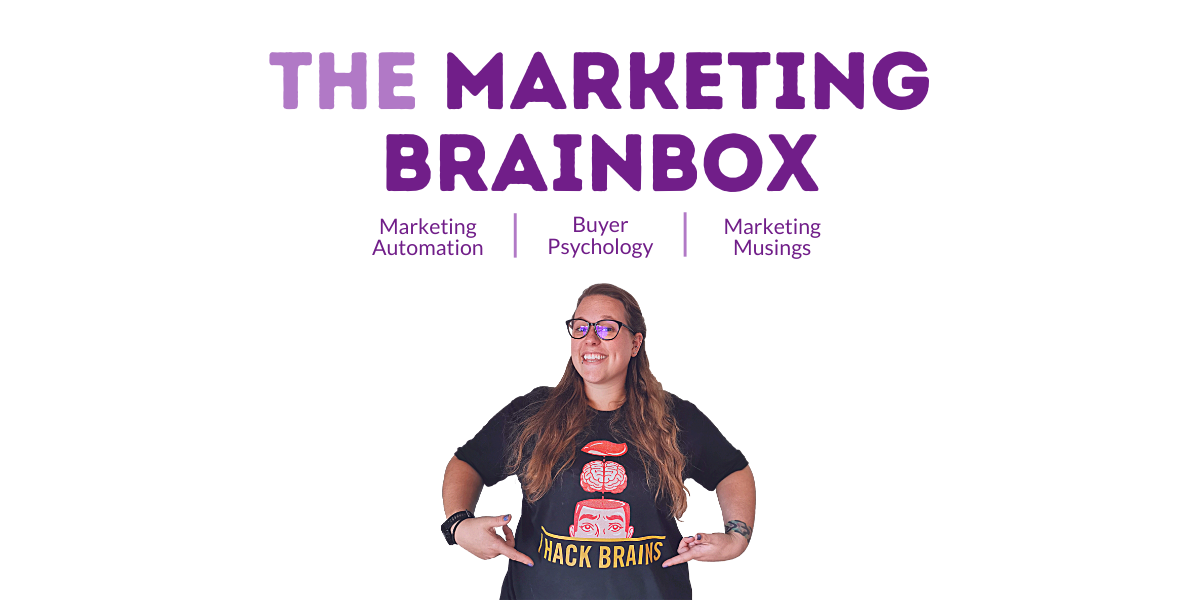Have you heard the term behavioural progressive profiling and been totally baffled about what it means?
And if you know, then how do you implement it in your customer journey to drive demand generation?
In a “perfect” world, your ideal customer would read one blog post, or landing page and immediately click the buy now button.
But let’s face it, that is a pretty unrealistic expectation to set.
We’re in the business of building trust and nurturing relationships with potential customers (hence why we love implementing marketing automation). So, understand that it takes time for most people to be ready to buy.
We know that around 70% of the buying decision is made before potential buyers get in touch with a company. And as people move along the awareness journey, we need to collect information from potential customers at each stage to inform and persuade them as necessary.
This allows us to service potential customers in the way they need, as well as inform sales when a lead is sales qualified, and ready to speak to someone.
So, in this blog, we’ll explore what behavioural progressive profiling is, and how it differs from what marketing automation companies want you to think it is.
Progressive Profiling vs Behavioural Progressive Profiling: What is the difference?
Let’s quickly address the elephant in the room before we begin.
The information surrounding progressive profiling from most marketing automation providers is a little too simplistic and shallow for our liking.
It’s not wrong!
But if you’re familiar with us Ninjas, you’ll know we like to dig a little deeper into things and understand the human motivations behind why people purchase.
For us, it’s not enough just to collect information at different points in the purchase cycle. We need to understand behaviour and use this to inform where potential customers are on the customer journey. This is why we prefer to use behavioural-based progressive profiling.
This helps us move potential customers from Marketing Qualified Leads (MQL) to Sales Qualified Leads (SQL). When they are SQL, they are primed to talk to the sales team and actually purchase.
Ultimately marketing departments can use behavioural understanding to generate better leads.
And in order to understand this, we need to look at the differences between progressive profiling and behavioural progressive profiling.
What is Progressive Profiling?
Firstly, let’s look at progressive profiling in its most basic form.
Progressive profiling is a method of segmenting your audience based on their interest and engagement with your content and sales materials.
The ultimate aim of progressive profiling is to understand what current and past behaviours mean. And then use this understanding to predict future behaviour.
So, what does this look like in action?
Well, rather than getting prospects to fill out long, time-consuming forms, you can create dynamic forms that change based on what you already know about a particular lead. As a result, every time you get an MQL to fill out a form you progressively learn a little more about them.
For example, you might ask for an email and name in the first form (you should always be doing this…). Then, as a prospect moves through the customer journey you can request more data based on their awareness and readiness to buy i.e. their budget.
This method allows you to learn more relevant and valuable information with each form. However, it also keeps the forms short and easy to fill in.
OptinMonster found that asking for three pieces of information vs six pieces of information increased conversion by 10%.
It reduces overwhelm and allows you to guide prospects through to SQL based on how someone is interacting with your site.
Related content: Progressive profiling: behavioural segmentation from customer behaviour
What is the problem with traditional Progressive Profiling?
However, there is a little problem with this, which you might already have figured out.
Progressive profiling in the form that most marketing automation companies promote is very shallow. It doesn’t give us a deep enough understanding of exactly where the customer is in the awareness journey.
It is more effective than lead scoring, which only tells you when prospects are engaged, not necessarily when a prospect is ready to speak to sales.Lead-scoring is the process in which you assign value, usually "points" to each lead that lands in your funnel. They are scored based on a few different attributes. This will help you and your sales team prioritise who to focus the energy on, and increase the rate at which your leads turn into customers.
Because of this, it doesn’t allow us to figure out what level of awareness a prospect actually has. And it doesn't enable us to figure out whether they have buying intent either.
Most people use that lead engagement as a trigger for sales to speak to a prospect. But it’s often too soon, and that might disengage people or annoy them.
According to most marketing automation companies, progressive profiling is simply collecting more information. But collecting more information doesn’t necessarily inform a behavioural understanding.
What is Behavioural Progressive Profiling? (And why is it more effective?)
In a nutshell, behavioural progressive profiling is learning more about people based on their progressive interactions with you.
The key here is learning!
And not on a surface level way like what position people hold within a business. It’s about getting deep into their psyche and understanding how their displayed behaviour and the content they are consuming predict their buying intent.

This allows us to dig into where they are in the awareness journey and what the sales intent is. When we know this, we know what content they need, to solve their current pain point in order to move them towards purchase.
How the Awareness Journey informs Behavioural Progressive Profiling
A common problem is that businesses create superficial and “random acts of content”. The content is not strategic, and it’s just content for the sake of content to get something on the site.
With behavioural progressive profiling, once someone has opted in they are a lead. Marketing automation tools then track their activity, see their clicks and how they go from blog post to blog post.
Depending on the type of content and the pages on your site that they’re visiting, we can then say who they are and where they are in their buyer journey. Then, your marketing automation system can deliver it when someone reaches a certain threshold.
This is why we focus so heavily on the awareness stages because if you are clever with the content that you create you can then cleverly daisy-chain content together, and offer up the right content at the right time.
The Five Awareness Stages
There are five levels of awareness, and where they are in that journey dictates what information you give them, and whether or not you’ll get the conversion:
1. Completely Unaware: the customer doesn’t know why they have a specific need, they are just dealing with symptoms of a problem. They have zero ties to your brand or your solution.
2. Problem Aware: the customer is aware they have a core problem and they are looking to understand it better. They aren’t clear on the solutions available, or yours more specifically.
3. Solution Aware: the customer can see there is a range of solutions available and all the benefits of them. But they haven’t quite narrowed it down to one product - specifically yours.
4. Product Aware: the customer is looking for specific products to fit their needs. Matching what’s in the marketplace to their set of criteria - built through what they have learned so far.
5. Most Aware: the customer knows about your product, knows it will solve their problem and are ready to buy. But they need to justify and validate the reasons to commit to purchasing.
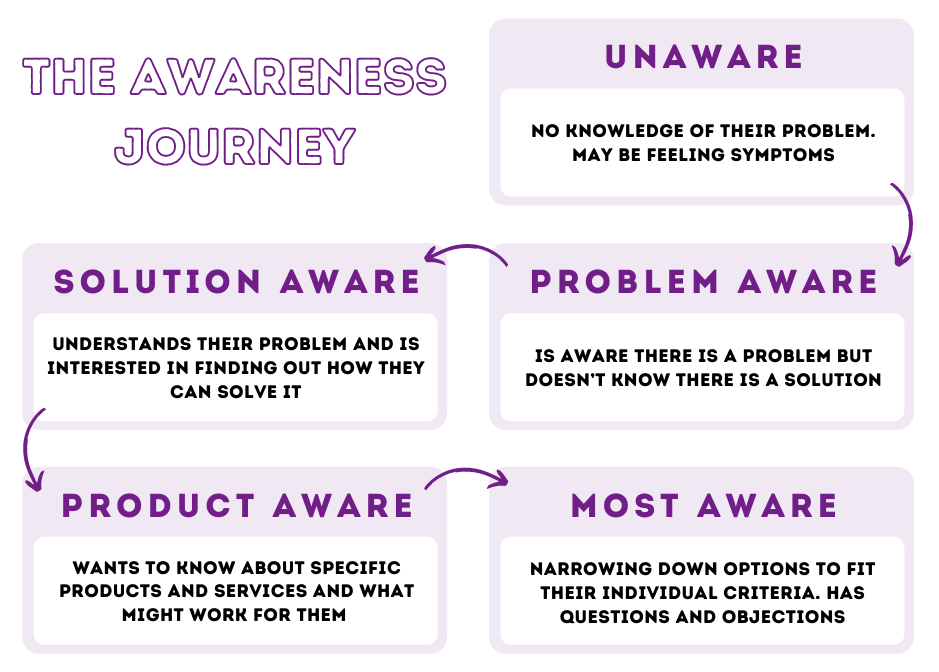
The advantages of Behavioural Progressive Profiling
So, you might have guessed that we are BIG fans of behavioural progressive profiling rather than simple progressive profiling.
It offers us the opportunity to engage potential customers at the right time and in the right way. By virtue of the fact that they are interacting with a specific piece of content, they are telling you where they are in their journey and therefore what information they need next.
And that sales intent behaviour where people are interacting with lots of bottom of funnel content is one of the ways we should be flagging that someone has moved from marketing qualified to sales qualified.
For example, if someone is visiting a pricing page or contact page after downloading buyer’s guides and reading multiple bottom-of-funnel blogs, we know that they have sales intent. They are most likely ready to seriously speak to someone about buying.
At this point, we can mark them as Sales Qualified (SQL). And better yet they are a hot lead 
Related content: How to create a data-driven content plan
How to successfully implement Behavioural Progressive Profiling into your marketing...
Implementing behavioural progressive profiling will allow you to identify sales intent, and offer them the right content at the right time.
This allows us to pre-empt your prospect's needs, and fulfil those touch-points necessary to make purchases. It’s a great way to show that you understand your potential customer, and build trust with them.
But it doesn’t magically happen!
We don’t sit back and wait for prospects to magically find what they need by themselves. In contrast, we create a campaign to nudge them in that direction.
One of our jobs is to track behaviour, as well as structure our campaigns, to pre-empt behaviour and increase demand generation. We help you reduce the amount of time taken to move people from marketing qualified to sales qualified leads.
Need some help with this? MAD is our flagship, all-encompassing 6-month service for designing and implementing your perfect customer journey. It’s all about giving you the best competitive advantage with a supreme behavioural journey.

